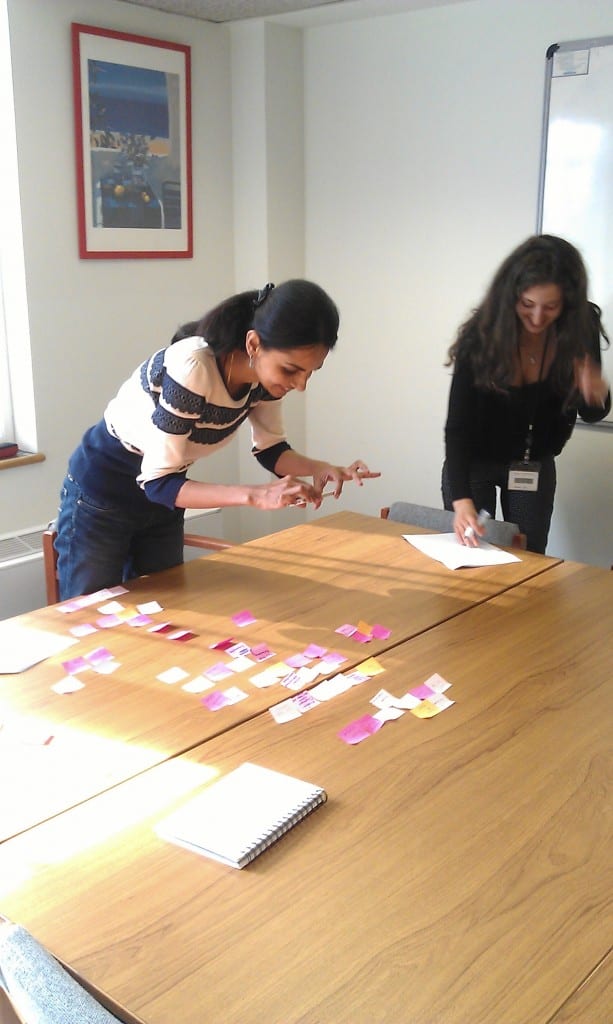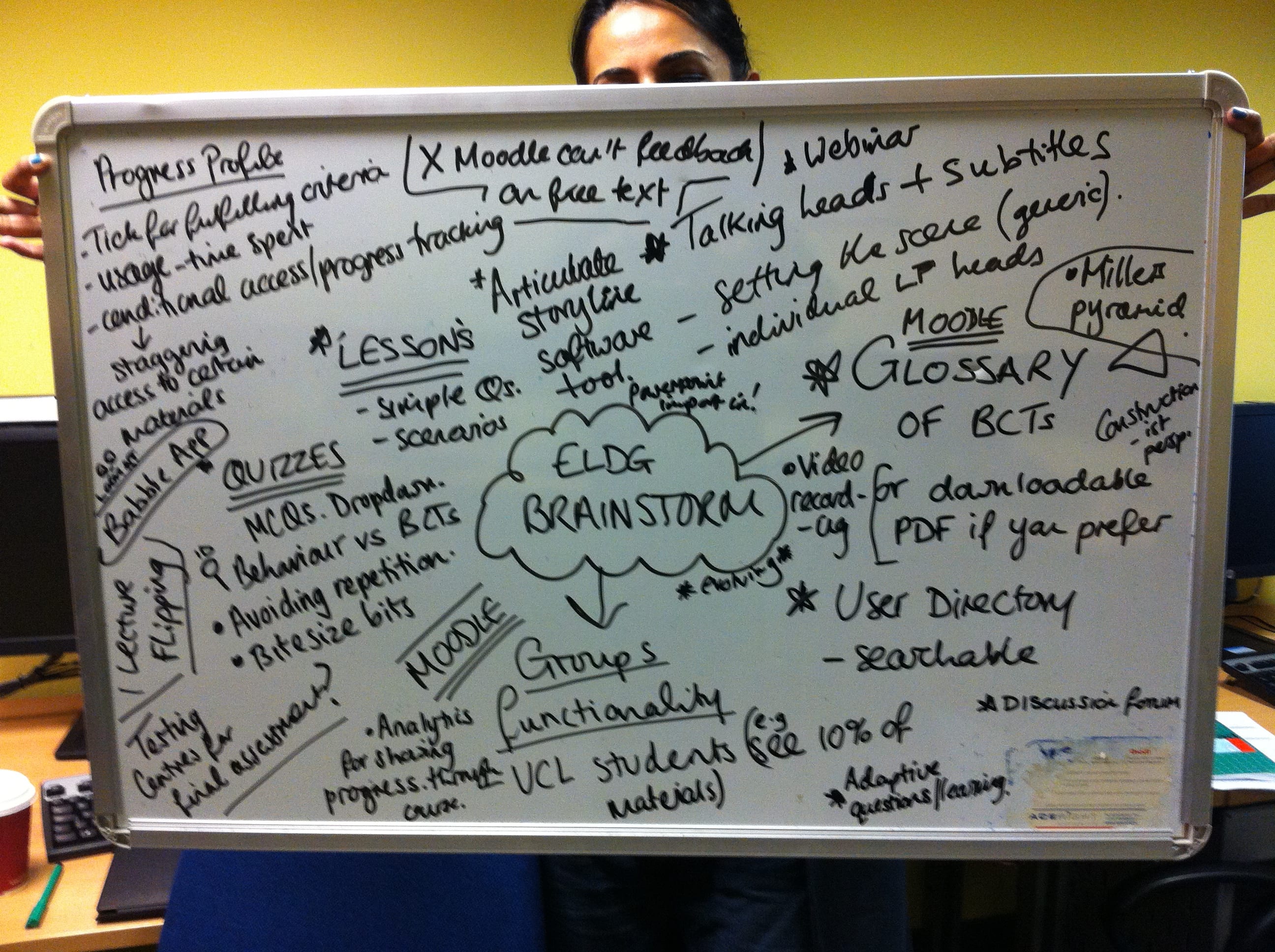Changing behaviour ELDG blog – Post-it mapping
By Matt Jenner, on 10 September 2013
This post was originally written by Elena, Harveen and Caroline – the team who received the ELDG grant:

On Thursday 29th August, Caroline Wood and her student developers, Harveen Kaur and I (Elena Panagiotopoulou) met to start thinking about mapping out content for the site. From our previous discussions and from reading this helpful e-learning blog on Articulate.com, we knew we had to carefully plan the sequence of activities that our students would be led through. At the beginning of our meeting, we used the ‘Silent Post-it technique’ to brainstorm independently on ideas about the content and what would make the site more engaging. We used post-its to write downour ideas and we then discussed them thoroughly one by one. Using the post-its, we created a flowchart in order to put the content in order:
As we’re all behavioural scientists on this team, we automatically started discussing how we could structure content using different behavior change techniques (BCTs) to increase the amount of time that our students want to spend on the site:
| Techniques used | |
| Set out learning objectives and outcomes of the module | Setting of goals |
| A ‘buddy’ or character to guide students through the resource | Providing social support |
| Series of interactive quizzes | Practicing skills |
| Option to access resources anytime through quick links | Practicing skills |
| Certificate available for students who complete all quizzes | Positive reward |
| Quizzes will gradually become more difficult | Graded tasks |
| There will be lots of examples and feedback during and after tasks | Providing feedback |
| Positive reinforcement given throughout the tasks | Support and praise |
| Timing! Providing an estimate of how long each task will take | Setting of goals |
| Make the task topics relevant for students | Relevant and personally useful problem solving |
| Building your own intervention task – something which they could build on for their 3rd year research project. | Action planning for future learning |
| Know that their input will continue to improve this resource for them and for future students | Engagement and involvement |
| Share with the students our journey in making this resource for them | Engagement and involvement |
At the end of our meeting, we had a more clear idea about the content of the site. Our next step will be to each take a section of the content and be responsible for building on Moodle.
 Close
Close






